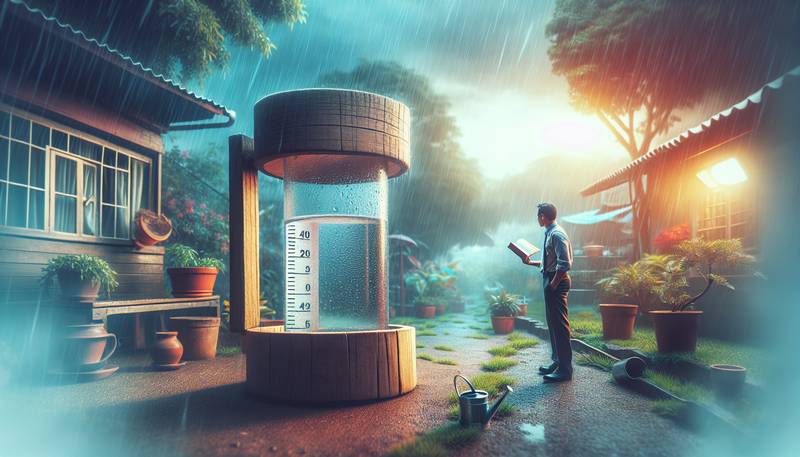DIY Rain Gauges: An Introduction to Meteorology

Why Meteorology MattersImagine waking up one day and deciding that you can predict the weather solely based on how many times your dog sneezes. Preposterous, right? Well, that's where meteorology comes in – it's the science of weather patterns and atmospheric phenomena. But why should you care about meteorology? Simply put, accurate weather predictions are essential for all aspects of our lives, from daily commutes to agriculture, not to mention determining when it's optimal to hold a barbecue party.So, how can you embark on a thrilling journey into the world of meteorology without enrolling in a university course or investing in expensive equipment? The answer lies in a simple yet powerful tool: the rain gauge.The Humble Rain Gauge: A Brief HistoryBack in the good old days (around 500 B.C.), the ancient Greeks used rain gauges to measure precipitation, mainly for agricultural purposes. The concept then traveled to India, where the ruler of the Maurya Dynasty constructed elaborate rain gauge networks to assess land taxes. Fast forward to the Renaissance era, and the likes of Leonardo da Vinci were using rain gauges to study hydrology. So, it's safe to say that rain gauges have been around for quite a while now.Creating Your Own DIY Rain GaugeEnough with the history lesson. It's time for you to create your own DIY rain gauge and transform into a bona fide meteorologist (sort of). Here's what you'll need:- An empty, straight-sided container (e.g., a glass jar or plastic bottle)
- A ruler or measuring tape
- Water-resistant marker
- Adhesive tape (optional)
- A sturdy stick (optional)
With your tools and materials ready, follow these steps:
- First, clean your container thoroughly to ensure there are no residues or contaminants.
- Position the ruler or measuring tape vertically along the side of the container, and mark the increments (e.g., every centimeter or half-inch) using the water-resistant marker. If the markings are faint, you can go over them with adhesive tape for better visibility.
- That's it! Your DIY rain gauge is ready for action. Find a suitable outdoor location to place your rain gauge – somewhere flat, open, and away from buildings, trees, or other structures that could interfere with the rain collection. You can use a sturdy stick to secure the container to the ground if necessary.
Utilizing Your DIY Rain Gauge: A Crash Course in Precipitation DataWith your rain gauge in place, it's time to start collecting data. Check your rain gauge at the same time every day, and note the amount of precipitation collected. You can create a simple logbook or spreadsheet to record your findings.Now, what can you do with your newfound meteorological data? Here are a few options:- Compare your data to official weather reports: How accurate are your local weather reports? You may find discrepancies between your rain gauge readings and the official data, sparking curiosity and further investigation.
- Observe trends in precipitation: As you collect data over time, you might notice patterns or trends in your local precipitation. This could help you anticipate future weather patterns or identify microclimates in your area.
- Share your data with other amateur meteorologists: Join online forums or social media groups dedicated to meteorology, and exchange your findings with fellow rain gauge enthusiasts. Who knows, you might stumble upon a community of like-minded weather nerds!
- Contribute to citizen science projects: Some organizations and research institutions accept rain gauge data from the public, as it helps build more comprehensive weather datasets. This way, your DIY meteorology efforts can contribute to the greater scientific understanding of our planet's weather systems.
A Gateway to the Exciting World of MeteorologyWhile a simple rain gauge may not make you the next Jim Cantore or Al Roker, it's a fantastic way to dip your toes into the fascinating realm of meteorology. Your DIY rain gauge can provide valuable insights into local precipitation patterns, and it may even inspire further interest in other aspects of meteorology, such as temperature, humidity, and atmospheric pressure.So, go forth and embrace your inner meteorologist. The weather may be unpredictable, but armed with your trusty DIY rain gauge, you can take on the elements with confidence and curiosity.
|
|







